Climber tells of surviving 'Dragon' avalanche on Ben Nevis
- Published

Paulo Grobel and three companions were on a climbing expedition on Ben Nevis
An experienced French climbing guide has told of surviving an avalanche on Ben Nevis.
Paulo Grobel was swept down the Ben's Number Four Gully in a large snow slide after a cornice, an overhanging edge of snow, collapsed on 11 March.
Mountain rescuers who went to his aid said that he fell 1,000ft (300m).
Mr Grobel, who took a photograph just moments before the cornice collapsed, has nicknamed the avalanche "the Dragon".
He fractured an ankle in the snow slide, which had blocks of snow the size of a Fiat Panda car.
Mr Grobel's three climbing companions were not caught in the avalanche and were unhurt.
Cornices are created by heavy snowfalls and persistent winds blowing from generally the same direction.
They are unstable and a collapsed cornice can cause avalanches.
Mountain rescue teams and the Sportscotland Avalanche Information Service (SAIS) have described cornices as being unusually large this winter.
Cornices can be mistaken as snow-covered ground. The one that collapsed around Mr Grobel had the footprints of two walkers who had passed through earlier.
The French mountaineer said: "I will keep etched in my memory this terrible moment suspended in space when the whole of the cornice of Number Four Gully was collapsing around me."
Mr Grobel closed his mouth and relaxed his body to increase his chances of surviving.
He said: "The time spent riding the Dragon lasted very little.
"I was riding in all directions with significant shocks everywhere but without too much pain. Then everything stopped."
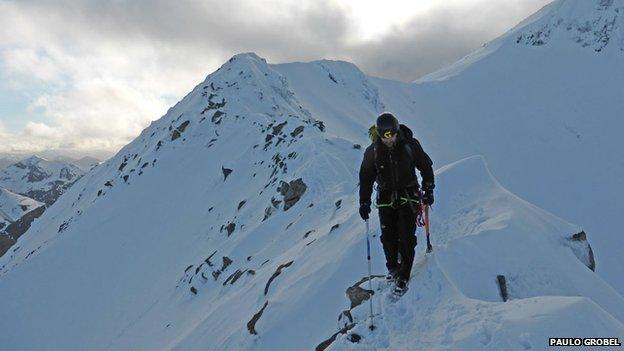
Mr Grobel and his friends had been enjoying a day out in the Scottish mountains
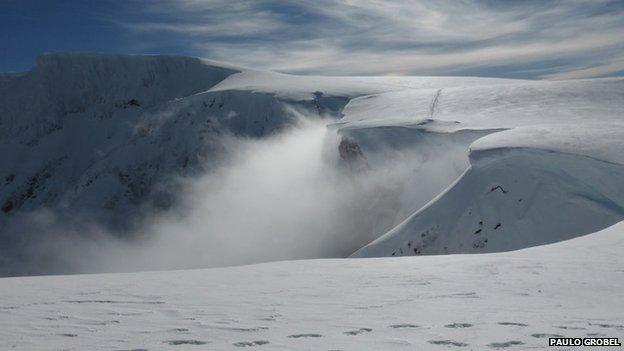
Seconds after Paulo Grobel took this picture he was falling as a cornice collapsed, causing an avalanche
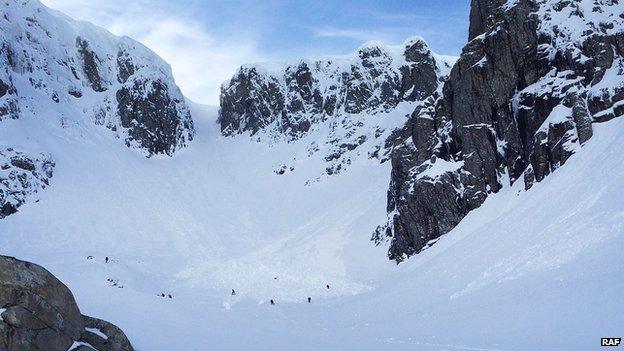
RAF rescuers captured this image of the avalanche
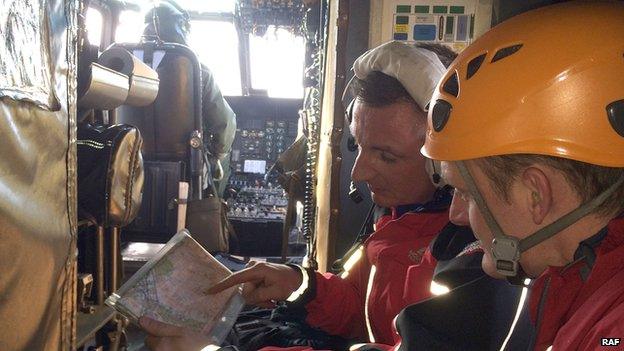
An RAF search and rescue helicopter and mountain rescue team were the first rescuers at the scene
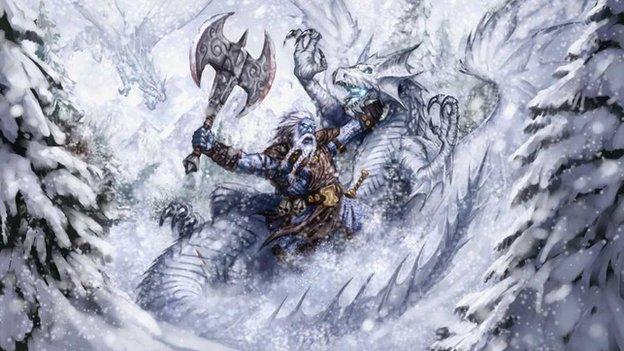
Fantasy art created by friends of Mr Grobel imagines his ordeal with "the Dragon"
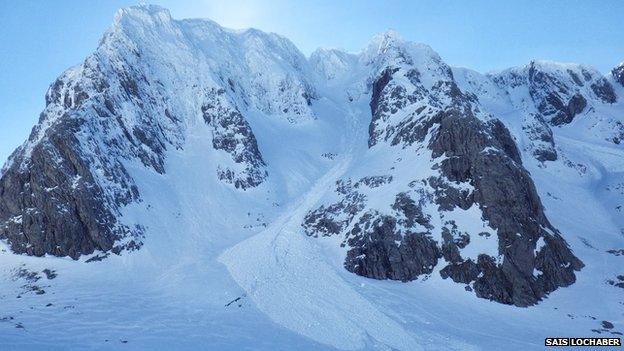
Other avalanches, such as this one in Observatory Gully, were recorded in the same week as Mr Grobel's
The climber was sore and could taste blood in his mouth but had escaped serious injury.
Mr Grobel said: "I was alive. It was incredible and wonderful.
"I was stuck under a large block, but in the open air."
The Dragon had "shot" Mr Grobel, propelling him up and out of the falling debris rather than burying him deep underneath it.
Other climbers who had seen the avalanche raised the alarm.
An RAF Lossiemouth search and rescue helicopter and a four-member RAF Mountain Rescue Team "fast party" from Kinloss Barracks were the first rescuers on the scene.
Members of the Police Service of Northern Ireland Mountain Rescue Team, who were training in the area, and Lochaber Mountain Rescue Team joined the rescue effort shortly afterwards.
Mr Grobel was airlifted to Belford Hospital in Fort William, while 23 rescuers and a search dog looked for the Frenchman's three companions.
They were later found by an off-duty member of Lochaber MRT. Mr Grobel's camera was also recovered from the avalanche debris.

Mr Grobel was airlifted to Belford Hospital for treatment
The RAF said a quick response to an avalanche could mean a difference between life and death.
A spokesperson said: "An avalanche flows down like a raging river, to then suddenly stop flowing and set like a liquid concrete slab around you, speed of extraction of the casualty is paramount."
Mr Grobel said: "I must thank all those who rescued me, treated and helped me.
"Not to mention the Dragon for having shot me."